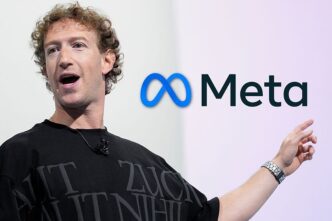OpenAI is shifting gears in its model release strategy. CEO Sam Altman recently revealed that two new AI models—o3 and o4-mini—will launch within the next few weeks. Meanwhile, the highly anticipated GPT-5 model is now scheduled to arrive a few months down the line.
Altman announced the update via a post on X (formerly Twitter), saying, “Change of plans: we are going to release o3 and o4-mini after all, probably in a couple of weeks, and then do GPT-5 in a few months.”
GPT-5 Takes a Back Seat—for Now
The new timeline signals a strategic shift at OpenAI. Instead of rushing GPT-5 out the door, the company is choosing to give the model more development time. According to Altman, this delay isn’t about minor fixes—it’s about dramatically enhancing the model’s performance and capabilities.
“There are a bunch of reasons for this,” he noted, “but the most exciting one is that we are going to be able to make GPT-5 much better than we originally thought.”
This move reflects OpenAI’s commitment to quality. GPT-4 already delivered near-human fluency, and if GPT-5 is already exceeding internal benchmarks, the team wants to make sure they deliver something that pushes boundaries even further.
Why the Sudden Shift?
OpenAI initially had no plans to release o3 or o4-mini anytime soon. But priorities have changed. As work on GPT-5 intensifies behind the scenes, launching these intermediate models helps the company stay agile and responsive in a fast-moving AI landscape.
Altman also admitted that integrating everything needed for GPT-5 proved more complex than expected.
“We found it harder than we thought it was going to be to smoothly integrate everything,” he shared.
In short, it’s not just about creating a smarter AI—it’s about building the infrastructure to support it. With expectations sky-high for GPT-5, OpenAI is working to ensure its systems can scale under pressure.
What Can We Expect from o3 and o4-mini?
Details about o3 and o4-mini remain under wraps. However, their names suggest they could be streamlined upgrades—possibly lighter, faster, or optimized for specific tasks.
By rolling out these models now, OpenAI maintains momentum and keeps users engaged while GPT-5 continues to bake. These launches may also serve as soft tests for the backend infrastructure needed for GPT-5’s eventual debut.
The timing is no coincidence. OpenAI is facing increased competition from rivals like xAI, Elon Musk’s new AI venture. Keeping the innovation cycle active helps OpenAI stay ahead in the generative AI race.
All Eyes Still on GPT-5
Though OpenAI hasn’t released a full breakdown of GPT-5’s features, insiders believe it could mark a huge leap forward. Potential upgrades include better context memory, fewer hallucinations, and more powerful tools for developers and researchers. Some speculate it could also introduce built-in multimodal capabilities, seamlessly combining text, image, and possibly audio generation.
But OpenAI is approaching this launch with caution. The surge in demand from ChatGPT’s early days strained its infrastructure. This time, Altman wants to avoid repeating that chaos.
“We are expecting unprecedented demand and want to make sure we have enough capacity,” he explained.
Staying Ahead While Buying Time
The revised rollout offers a smart balance—launch smaller models now, buy time to perfect a game-changing one later. This strategy keeps users engaged, helps OpenAI fine-tune its systems, and ensures smoother scaling when GPT-5 eventually drops.
In essence, OpenAI is playing the long game—betting big on a more powerful, stable version of GPT-5 that can truly move the industry forward.













